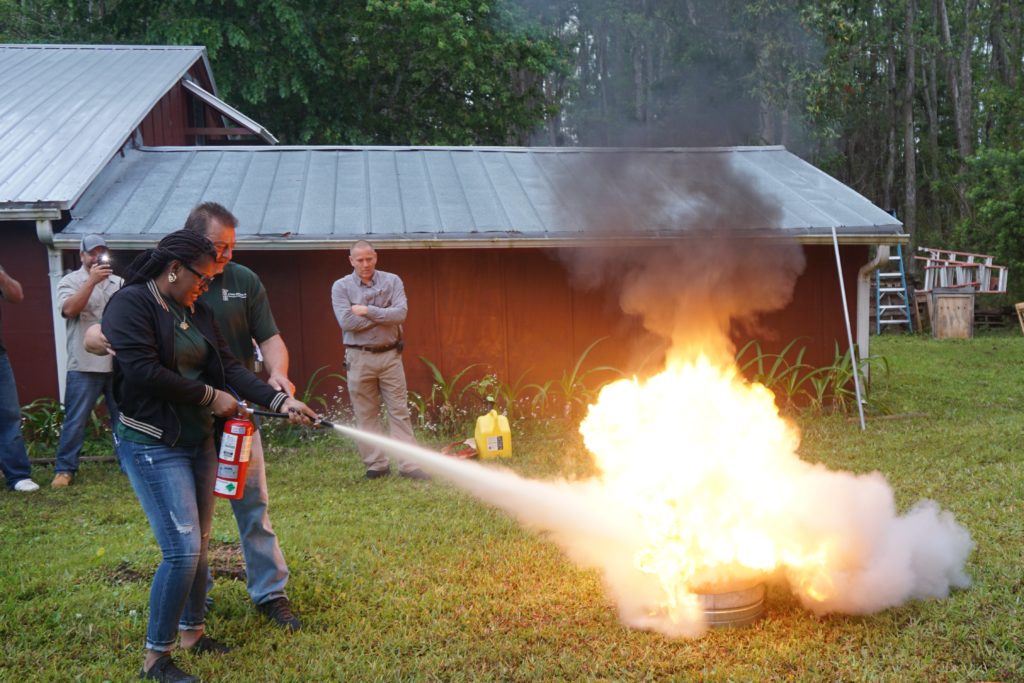It is of utmost importance to position fire extinguishers correctly in companies and public places. This ensures an effective response to fire risks. Regulations outline more than just quantities—they define the path to swift action for firefighters in crises. But what's the optimal placement? Let's navigate through the pitfalls to evade undesirable consequences in emergencies.
Regulations for fire extinguisher positioning
Well, typically fires are grouped into four categories, which allows us to choose the appropriate extinguisher and firefighting substance for its particular characteristics. The fire classes are divided into A, B, C and D, that is:
- Class A fires: fires of solid materials, usually of an organic nature, which lead to the formation of embers;
- Class B fires: fires of liquid or liquefiable solid materials (for example petroleum, paints, oils, etc.);
- Class C fires: gas fires;
- Class D fires: fires involving metallic substances.
Considering the above classification and level of risk associated with fire incidents is crucial when it comes to installing fire extinguishers. You've gotta think hard about how they're classified and the risks at hand. Plus, you've got a checklist: what activity's happening, the size and vibe of the place, the materials in sight, and how many folks are around. In general, the legislation requires that the portable fire extinguishers must:
- be mounted on the wall at a height of 1.10 to 1.50 meters above the floor;
- be placed close to exits and along escape routes;
- be placed in areas that are visible and easily accessible; and
- be reported using the appropriate signage.
If they do not take up space in passage areas, special stands, appropriately signposted, offer an alternative for installing fire extinguishers.
Number of fire extinguishers per surface
To be placed, the following criteria must be taken into consideration:
- number of floors (there must be at least one fire extinguisher per floor);
- plane surface;
- number and capacity of the fire extinguishers.
- specific fire hazard (fire class);
- the distance—which cannot exceed 30 meters—that a person must go to utilize a fire extinguisher.
Second, depending on the danger level (low, medium, or high), it's critical to think about which kinds of fire extinguishers are best for different kinds of surfaces, as seen below:
- Fire extinguisher 13 A - 89 B, protected surface: 100 m2 (low risk);
- Fire extinguisher 21 A - 113 B, protected surface: 120 m2 (low risk), 100 m2(medium risk);
- Fire extinguisher 34 A - 144 B, protected surface: 200 m2 (low risk), 150 m2(medium risk), 100 m2(high risk);
- Fire extinguisher 55 A - 233 B, protected surface: 250 m2 (low risk), 200 m2(medium risk), 200 m2(high risk).
However, as regards wheeled fire extinguishers, the choice of type and number must be made based on the class of fire, the level of risk, and the personnel assigned to use them.
Positioning fire extinguishers: tips and mistakes not to make
In terms of positioning fire extinguishers, there are at least 2 fundamental errors to avoid (in addition to failure to comply with the rules mentioned previously, such as placing them in an inconspicuous point or lack of adequate signaling) to prevent or limit fire situations:
- Place the fire extinguisher in a closed corridor: something not to be done, to avoid the risk of being trapped while using it;
- Failure to carry out periodic checks: worrying about having fire extinguishers maintained is essential to avoid finding yourself with non-functioning fire equipment just when you need it.
Other tips to keep in mind when placing fire extinguishers are:
- Strategically installing fire extinguishers includes placing them near electrical panels and high-risk zones, safeguarding the premises effectively;
- Always keep in mind that a portable fire extinguisher can help suffocate at the beginning of a fire or in opening an escape route in particular situations, but it is not an adequate tool for extinguishing a large fire: the extinguishing action only lasts a few tens of seconds.
- Establishing the number, type, and positioning of fire extinguishers are operations that cannot be improvised and which require the intervention of professionals in the sector.
Conclusion
Having fire extinguishers installed at the right locations in the workplace and other public areas is critical for safety. Following regulations, understanding fire classes, and considering location-specific risks determine their placement. Avoiding common mistakes and regular maintenance is vital. Thoughtful positioning, regular checks, and professional advice ensure effective fire safety measures.


No comments yet